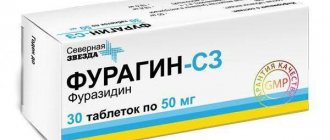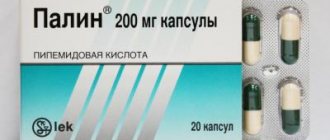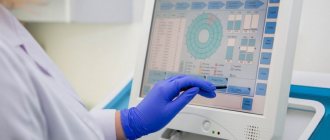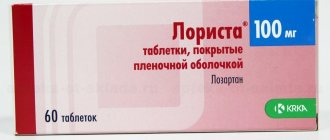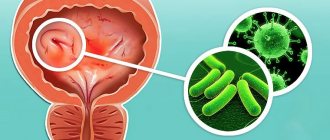Treatment of cystitis requires a specific approach. More often, to eliminate the problem, a complex of medications is used that differ in their principle of action. For many years, furazolidone has been a popular remedy for cystitis. What is the effectiveness of the presented remedy and how to take it correctly, let’s look at it in more detail.
Instructions for the use of Furazolidone in the treatment of cystitis
This is an antimicrobial agent based on nitrofurans. The drug fights both gram-positive and gram-negative microorganisms. Exceptions are pathogens of purulent and anaerobic infections that are resistant to nitrofurans.
In small doses, Furazolidone inhibits the vital activity of bacteria, reduces their activity, due to which the body has the opportunity to restore natural immunity and overcome the infection on its own. With increasing dosage, Furazolidone gives a bactericidal effect (kills microorganisms).
The indications for use of the product are numerous, ranging from bladder diseases to dysentery.
Despite the fact that Furazolidone is inferior in effectiveness to antibiotics, microorganisms extremely rarely develop resistance to this drug. This quality allows the drug to be used for recurrent cystitis, as well as for the treatment of chronic forms.
The medicine is available in several forms. In pharmacies you can purchase Furazolidone in the form of:
- Tablets - blisters contain 20 tablets of 0.05 grams each. The product is sold in individual packages with attached instructions.
- Granules are a convenient form when prescribing the drug to children. Granules are available in bottles with a measuring cap and instructions.
- Powder is the least popular form. Commonly used in veterinary medicine.
Furazolidone is produced by several manufacturers, so depending on the pharmacy chain and region, the price of the drug and package design may differ significantly from each other. In general, reviews of Furazolidone prescribed for cystitis are quite positive.
Use of the drug for cystitis
The use of Furazolidone is carried out according to a specific scheme. In between appointments it is necessary to undergo examination and tests. This measure allows you to assess the presence or absence of positive dynamics and, if necessary, adjust the dosage. Treatment with Furazolidone for cystitis is as follows:
- Days 1,2,3 - you need to take 100 mg of the drug every 6 hours,
- Days 4,5,6 - break. During this period it is necessary to undergo tests,
- Days 7,8,9 - take the drug according to the previously determined dosage.
Depending on the stage of the disease and the general condition of the patient, the dosage of Furazolidone may vary slightly. Usually, to achieve the required therapeutic effect, 2 tablets are taken at one time. If after the tests the dynamics of the disease does not change, then the dosage is increased. The maximum daily dose of the drug is 16 tablets with a dosage of 50 mg.
In order for cystitis therapy with nitrofurans to occur as quickly and effectively as possible, it is necessary to adhere to a certain diet. Salty foods, spices and other ingredients that can retain water are excluded from the menu. Additionally, they drink special diuretic herbs and infusions. This method will speed up the removal of toxins from the body.
Precautions during treatment with Furazolidone
Taking the drug requires compliance with certain precautions (carefully read the instructions for use of the drug) to reduce the risk of side effects to a minimum. The main measures include:
- Complete abstinence from alcohol, smoked foods and too spicy foods for the duration of treatment. Alcohol can be consumed no earlier than 6 days after completion of the therapeutic course.
- Refusal of antiviral and antitussive drugs, including nasal drops. These drugs can significantly reduce the effectiveness of the drug.
- If you feel worse, immediately consult your doctor and replace the drug with a more suitable one.
Side effects
During treatment for cystitis, patients may complain of:
- nausea,
- vomiting
- loss of appetite,
- skin rash,
- headache,
- general malaise,
- cough,
- chest pain.
Side effects are described in more detail in the instructions for use. The drug must be stored in a dark, dry place at a temperature not exceeding 25 degrees. The shelf life of tablets is 3 years, and granules are 2 years.
Getting to know the disease
There are several causes of cystitis:
- Bacteria entering the bladder . Very often, this bacterium is E. coli, which enters the urethra from the anus. And since in females it is located in close proximity to the vagina, they suffer from cystitis much more often than men.
- Infection during sexual intercourse , most often as a result of insufficient personal hygiene.
- Allergy to intimate hygiene products . Its signs appear in the form of itching and redness.
- As a result of constant holding back urination . Most often, due to this reason, cystitis appears in older people.
- Prolonged hypothermia of the pelvic organs.
Factors contributing to the appearance of cystitis:
- decreased immunity, diseases of the genitourinary system, nervous stress, various infections, pregnancy;
- disruption of the mucous membrane of the urethra and vagina;
- frequent constipation;
- use of various spermicides;
- lack of personal hygiene;
- lack of estrogen hormones in the body.
There are two types of cystitis: acute and chronic.
Chronic appears as a result of missed treatment of acute cystitis. Or due to improper treatment. The following signs indicate the presence of acute cystitis:
- urination accompanied by acute pain;
- an admixture of pus in the urine (determined only after testing);
- lower abdominal pain.
Sometimes all these signs disappear in just a few days, even without treatment. But in most cases it takes a week and
carrying out appropriate treatment.
If acute cystitis is not treated on time, it can lead to quite serious complications.
In particular, the kidneys may be damaged if cystitis pathogens penetrate there from the bladder. This can cause a serious illness - pyelonephritis, and then it will be necessary to carry out much more serious treatment, sometimes even in a hospital setting.
As mentioned above, as a result of improper treatment of acute cystitis, it can develop into chronic.
The symptoms are exactly the same as in the acute course of the disease, but are much less pronounced.
They may be present constantly, or they may appear from time to time, but regularly, with various breaks.
Acute cystitis is treated with antibacterial drugs, which are prescribed by a doctor after a urine test. During treatment, it is recommended to drink as much fluid as possible and avoid spicy and salty foods.
For chronic cystitis, antibiotics are prescribed only after it has been established which pathogen was the cause and its resistance to the drugs.
Furazolidone for children
As in adults, the absorption of medicine in children occurs through the gastrointestinal tract. In this case, the substance quickly spreads throughout the body and is excreted in the urine. That is why during treatment with the drug you should not be alarmed if the child’s urine turns into a characteristic yellow color.
The daily dose of the substance is determined by the pediatrician and is calculated based on the total weight of the child. There should be 10 mg of Furazolidone per kilogram. The resulting number is divided by four. Thus, a dosage is obtained that must be taken at a time with a dosage frequency of 4 times a day.
The duration of therapy ranges from 3 to 5 days. In more advanced cases, the duration can be increased to 10 days. If Furazolidone is prescribed to children, the instructions for use for cystitis should be read in full!
Important! Although tablets and granules do not affect gastrointestinal health and do not cause complications such as antibiotics, it is best to give the remedy after a meal. In addition, the tablets should be taken with plenty of clean water.
We recommend that you read:
- Urolesan for cystitis.
- Levomycetin for cystitis.
- Hexicon candles.
Are there any side effects
Side effects are observed with long-term use of tablets and are expressed in the appearance of neuritis. The medicine causes hepatotoxic effects. If a person has anemia of various etiologies or hypovitaminosis B, C, or diabetes, then there is a risk of peripheral neuropathy.
- Taking Furazolidone in rare cases leads to the appearance of a rash, Quincke's edema, itching and other allergic manifestations.
- With long-term antibiotic treatment, bronchospasms or pulmonary edema may develop.
- Another side effect is decreased appetite, accompanied by attacks of nausea and vomiting.
Furazolidone during pregnancy
Furazolidone is prescribed to pregnant women experiencing cystitis. In this case, the duration of therapy and dosage of the substance are determined individually for each case. At one time, they are prescribed to take from 2 to 4 tablets 3-4 times a day. The permissible course of treatment is no more than 14 days.
Before starting treatment, you need to study the manual, which tells you how to take the drug correctly in a particular case.
Furazolidone is prescribed to pregnant women only when the possible benefit exceeds the maximum permissible harm to the mother and child.
Contraindications
Furazolidone, like all drugs, has a number of contraindications that should be taken into account when prescribing the drug.
The antibiotic is not used in the following cases:
- hypersensitivity to individual components of the drug;
- renal failure;
- pathologies of the cardiovascular system;
- diseases of the nervous system;
- lactase intolerance;
- chronic liver failure.
The medicine is not used in the treatment of the inflammatory process in early pregnancy, since the active substance penetrates the placenta and has a toxic effect on the fetus.
The drug can be taken, as a last resort, as prescribed by a doctor.
When using Furazolidone during lactation, there is a possibility of accumulation of the active ingredient in breast milk and the development of diseases of the hematopoietic system in the child.
Reviews from doctors and patients about Furazolidone
Furazolidone is a drug for cystitis, reviews of which will help evaluate the effectiveness of the drug, as well as avoid common mistakes during therapy.
Anna, 34 years old
I have been familiar with the medicine since childhood, I heard about it from my mother. An excellent drug, but I used it exclusively for poisoning. The tablets were kept in my medicine cabinet, and I took them with me on vacation, to the seaside, and even to the country. Imagine my surprise when my doctor prescribed Furazolidone for cystitis. At first it was scary to take 16 tablets at once, I was very afraid of side effects. Fortunately, the treatment went well, relief came on the second day. I also did not encounter any side effects. Now I will know how universal this remedy is.
Valeria, 25 years old
On the advice of friends, I took Furazolidone for cystitis. The drug helped my friend, but my treatment was unsuccessful. In the end, I still had to go to the doctor. As for side effects, they were not observed either. In general, these are useless pills for me, although they help with stomach problems.
Konstantin Alexandrovich, doctor
Furazolidone is an antimicrobial drug that has been popular among patients and doctors for several decades. I prescribe it to patients in the complex treatment of cystitis. Unlike antibiotics, you do not need to take additional probiotics while taking Furazolidone, since the intestinal microflora is not disturbed. The only thing I remind patients about is the need to take activated charcoal at the same time. This will avoid intoxication and speed up the removal of the substance from the body without side effects.
Overdose
Sometimes, when using a medication in a high dosage, the following symptoms may develop:
- toxic form of hepatitis;
- acute leukopenia;
- hemolytic type anemia.
Basically, such reactions appear when the patient uses the drug for a long time. If these signs are observed, then discontinuation of the medication is required. In this case, the stomach should be rinsed. In addition, the condition should be reported to your doctor. The specialist usually prescribes medications for symptomatic therapy.


